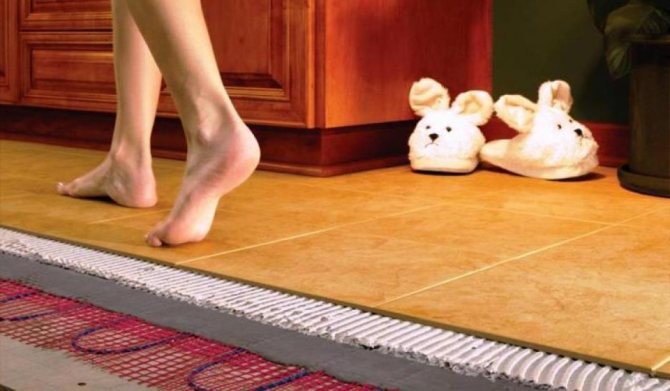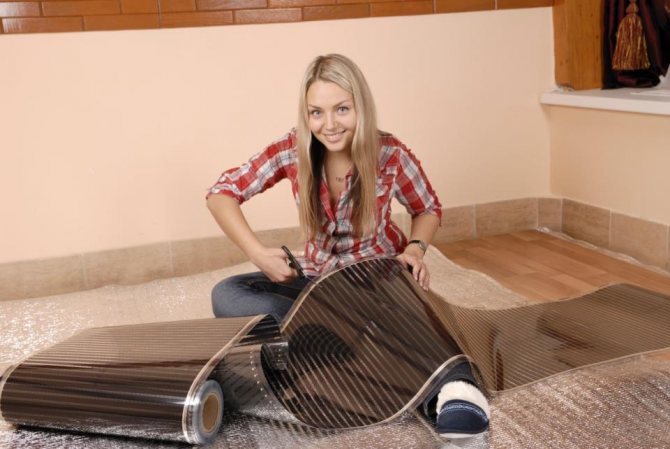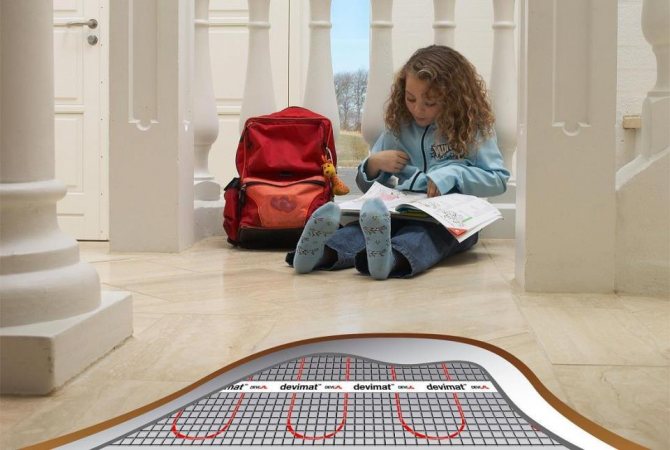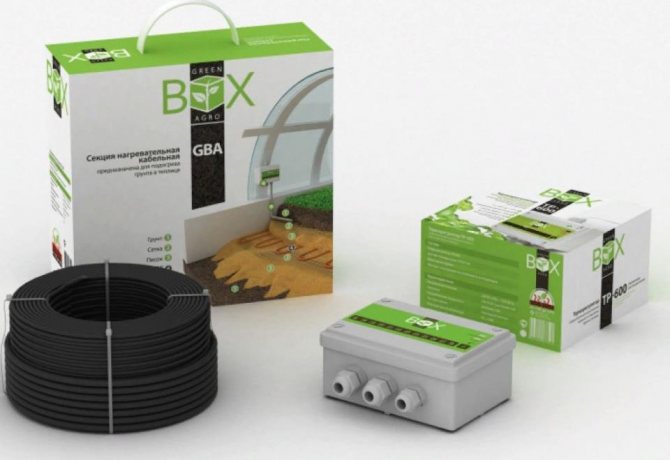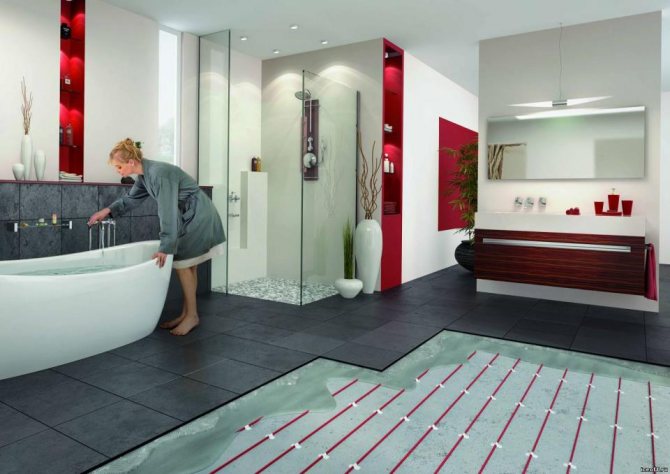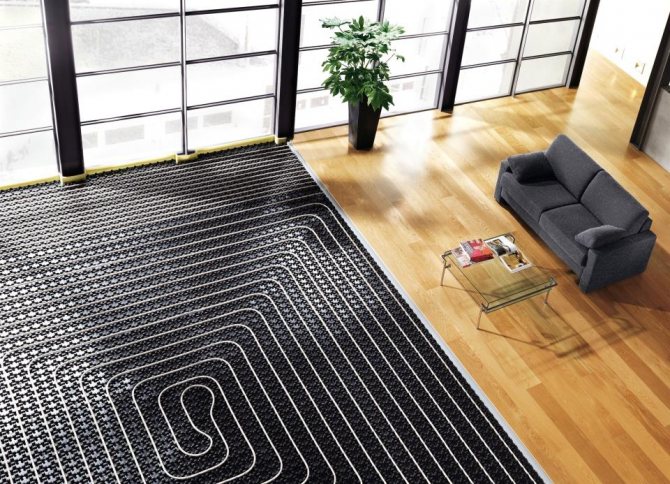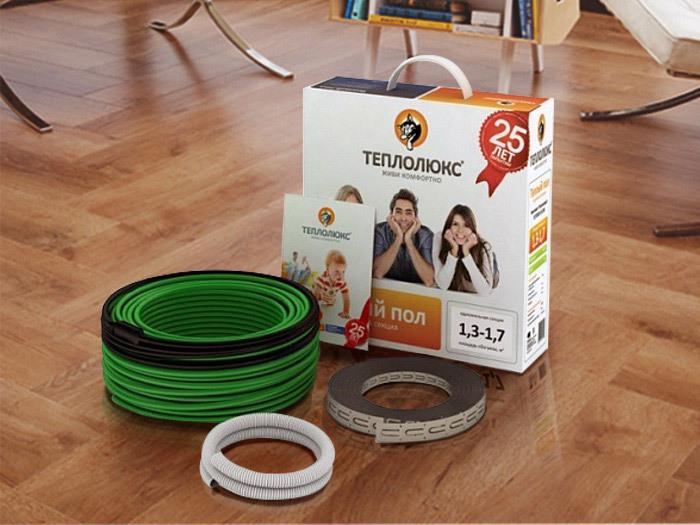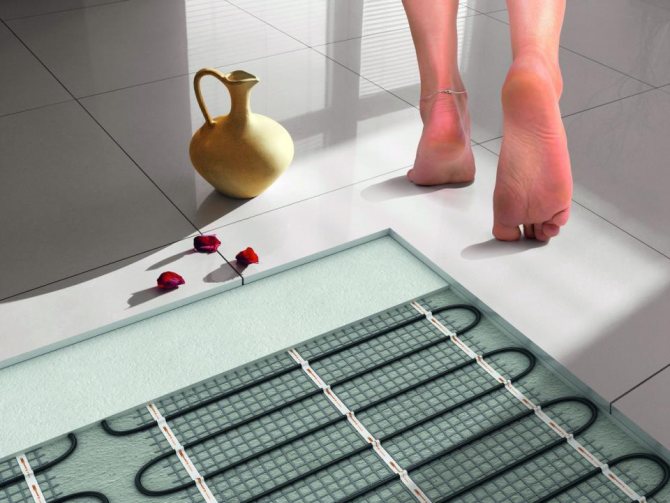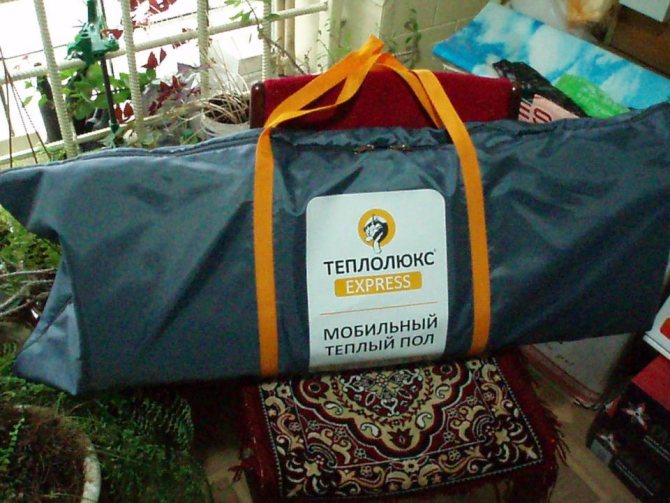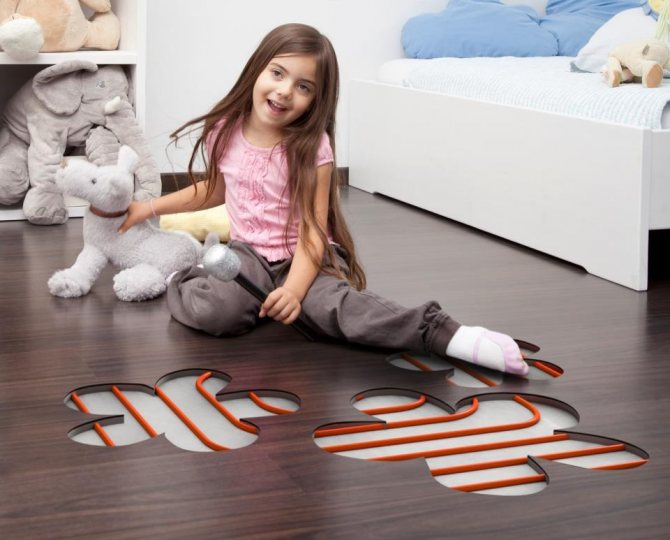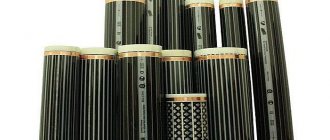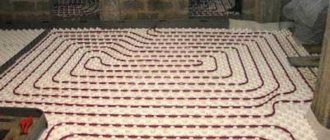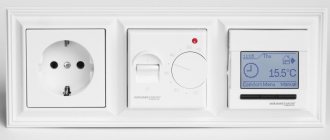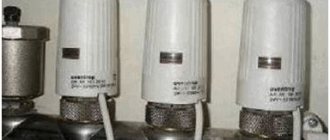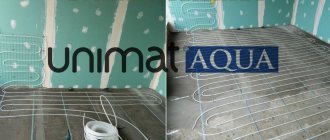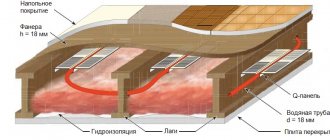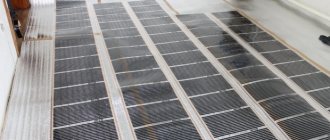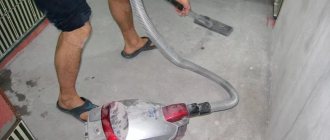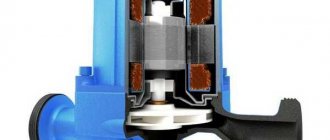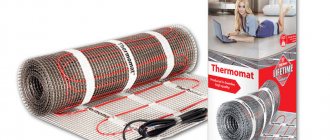Home ›Apartment and country house› Construction and repair ›Warm floor under tiles. Which one is better to choose?
- Installation of underfloor heating under tiles
- Water heated floors
- Installation under tiles
- Electric underfloor heating
- Varieties of electric underfloor heating
- Universal warm floor
- Ultrathin underfloor heating
- Heating section
- Heating mats
- Heating infrared film
- About strengths and weaknesses
- 40 photos of tile ideas for underfloor heating:
To understand what is warm floor under the tiles and choose the right one which is better, you need to get an overview of the types of underfloor heating and installation features. Because the choice of the type and type of underfloor heating is determined primarily by external factors related to the level of the floors, the height of the ceilings, the area and geometry of the room, the possibility of making global repairs.
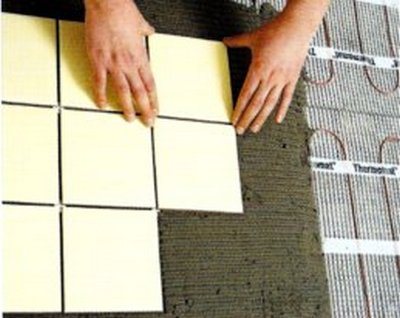
Water heated floors
A pipe system recessed in a cement-sand floor screed, with hot water circulating in it, is called water underfloor heating. Since it will not heat up by itself, the pipelines are connected to the heat supplier. It can be both an autonomous and a centralized system that provides heat supply.
The warm floor, providing a comfortable thermal regime, is a pipeline made of metal-plastic or polyethylene pipes connected to a temperature controller and a source of heat energy supply.
Flexible pipes with a high coefficient of thermal conductivity have low resistance and provide maximum heat transfer. Almost all of the heat generated is directed outside, heating the concrete screed and ceramic or stone tiles laid on top of it. As a result, the floor surface heats up completely and gives off heat.
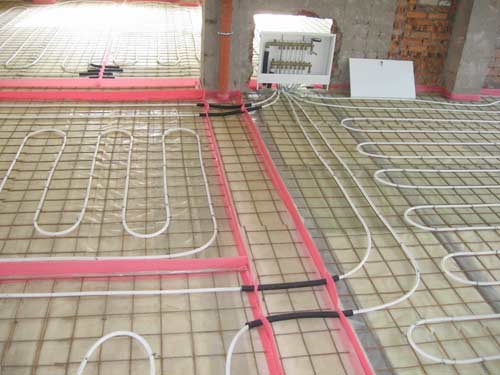

Modern water underfloor heating is controlled, and the room temperature is adjusted to the desired one, using a special device. It is called a coolant mixing unit. Therefore, the presence of this element is important to take into account already at the design stage.
Making a finish coating
To perform a finishing screed, dry mixtures, semi-dry and wet solutions are used. The dry screed is not very durable, but there are some advantages of this technique. Floor cladding can be performed immediately after the coating has been formed.
In emergency situations in the water main, it is easy to carry out repair work. Semi-dry screed dries quickly, but is hygroscopic. Wet solution takes a long time to set. To install the finish floor covering, you will need to wait at least 21 days.
For a fine screed, concrete M300 is used. The mixture can be prepared independently from cement, sand and fine gravel. The proportions must be observed: 1/4 / 3.5.
To increase the elasticity of the material and thermal conductivity, plasticizers and polymer fiber are added to the mixture. For screed, you can use ready-made underfloor heating mixtures from the manufacturer.
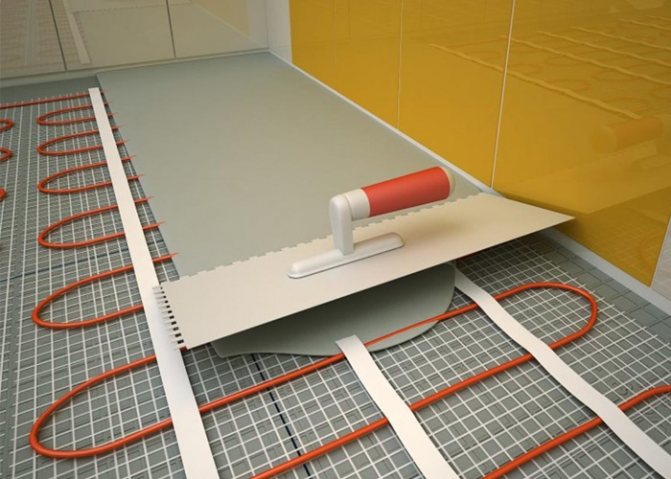

The formation of a warm floor is carried out in stages. It is necessary to first form all the insulating layers of the sub-surface, then repeat them for the "warm floor" system. Then the pipeline is strengthened, testing is carried out, the water main is closed with concrete mortar.
YouTube responded with an error: Access Not Configured. YouTube Data API has not been used in project 268921522881 before or it is disabled. Enable it by visiting https://console.developers.google.com/apis/api/youtube.googleapis.com/overview?project=268921522881 then retry. If you enabled this API recently, wait a few minutes for the action to propagate to our systems and retry.
- Similar posts
- How to calculate the distance between underfloor heating pipes?
- What are the characteristics of Caleo underfloor heating?
- How to install underfloor heating Grand Meyer?
- What concrete is suitable for a warm water floor?
- Do you need a warm floor in the house?
- How to install underfloor heating Q-Term?
Installation under tiles
The installation of such warm floors indoors requires a significant amount of repair and construction, installation and commissioning work.First, the old floor coverings are dismantled down to the concrete base. Then determine the floor level.
If the difference is more than ten centimeters, then first the leveling screed is poured, after which, in the order according to the instructions (taking into account the slope, angles of rotation, etc.), pipes are laid through which hot water will pass.
Advice! The thickness of the screed over the heating pipes should not be less than 5 cm. Then the threat of their mechanical damage by dowels at the time of installation work on the installation of plasterboard partitions, fastening of floor equipment is reduced. In this case, pins should be used with a length of 1 cm less than the thickness of the screed.
The next stage is the installation of the coolant mixing unit and the connection of the finished pipeline to the heat source. The final part is laying the floor tiles.
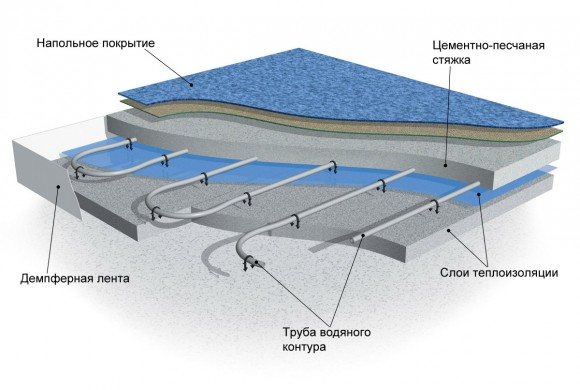

It is difficult to do this work on your own. This requires the skills and knowledge of several construction trades.
Installation, tie-in and connection of a gas boiler, or a direct tie-in to city heating networks requires special approvals issued by authorized regulatory organizations.
If the area is not gasified, it is prohibited to connect to central heating, there is a possibility of flooding the lower rooms or in other similar situations when it is inappropriate to install such a warm floor, you should use floor systems, the heat source of which is electric energy.
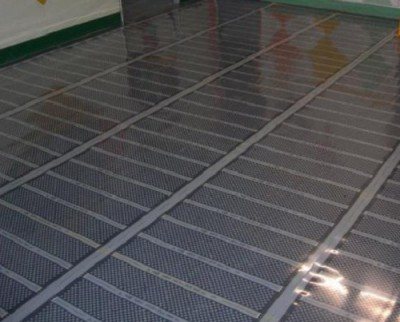

Prepare a rough base
Place the underfloor heating material on a flat surface. It is necessary to build a rough base. To do this, use a concrete screed, self-leveling floor, self-leveling mortar. The surface is insulated, a waterproofing material is laid on it.
When installing underfloor heating, you must follow the instructions. What are the steps involved in preparing a rough base?
- A layer of sand of 10 cm is laid on the ground. It must be tamped.
- Next comes a layer of expanded clay 10 cm. This is the basis for the subfloor.
- The surface is protected from moisture penetration. For this, roll material is used, membranes based on bitumen. Laying is carried out over the entire surface, capturing the walls at a height of 40 cm. Bituminous tape is used for fastening.
- For underfloor heating to be effective, it is necessary to insulate the sub-surface. In this case, heat will not spread to the foundation or to the ground. All energy is channeled up to the floor. Mineral wool, expanded polystyrene plates are used as insulation: they have locks for connection. Plates are easy to install, if necessary, adjust their size with a mounting knife. The thickness of the insulation depends on the freezing of the foundation. The optimal thickness under normal climatic conditions of the region is 10-15 cm.
- The thermal insulation material is protected from condensation with a polyethylene film. There is no need to strengthen it. It adheres tightly to the coating.
- A damper tape is installed on the lower perimeter of the walls. If there is no adhesive layer on it, then self-tapping screws are used for fastening.
- Concrete screed is carried out. It is recommended to use the M500 brand.
We recommend: Do you need an anchor bracket for underfloor heating?
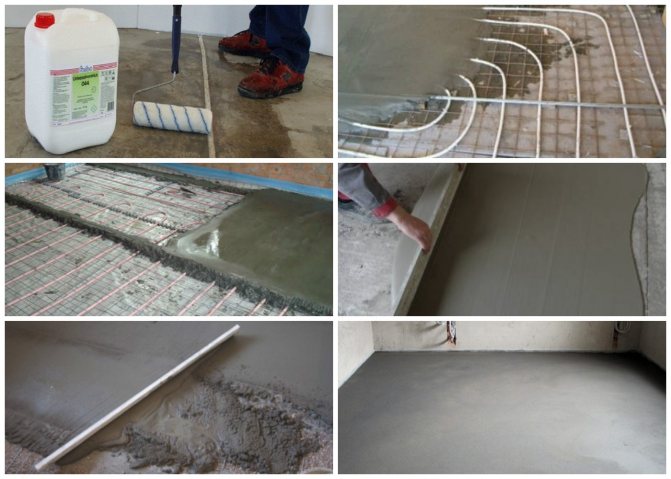

Insulation for roughing is used in cold regions where the foundation can freeze. In regions with mild climatic conditions, it is enough to isolate the base from moisture and fill it with concrete. In the future, the steps to form a rough floor for a warm floor are repeated: waterproofing, insulation.
As protection against moisture, it is not recommended to use materials based on bitumen. When heated, it emits toxic fumes. The concrete surface and part of the walls are covered with mastic and a primer with moisture-repellent properties.
Insulation, polyethylene film and a reflective screen are placed on the prepared coating; This is a 3-5 mm thick foil substrate. The material allows heat to be directed to the floor.
The preparation of the rough coating involves several layers of waterproofing. They protect the foundation, insulation, concrete screed from the effects of condensation, which is formed due to temperature changes. The material is not protection against flooding in emergency situations in the liquid floor line.
Electric underfloor heating
This type of heating is safe to operate and easy to install. It can be used to organize main or additional heating.The variety of types of electric underfloor heating allows you to mount them at any stage of construction and repair, as well as during the operation of the premises. It all depends on the need, feasibility, power and desire of the owner of the premises.
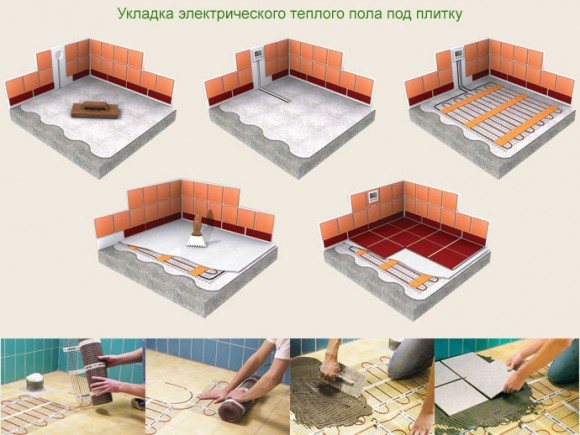

Electric underfloor heating is an integral closed space heating system. It includes elements that convert electrical energy into heat, a power cable for supplying electricity, temperature sensors and thermostats.
Important! In order for the system to work effectively, it is necessary to make accurate calculations, prepare a project or scheme. This can only be done by a qualified technician. Correct installation and professional setup are equally important.
Preparatory work
When arranging a warm floor "Teplolux", the instruction assumes preliminary preparation, verification of the conformity of the system parameters to the installation site.
Attention! The heating element is not placed in the locations of objects without legs. The installation area should be at least 70% of the room space.
It is important to check that the electrical wiring is correct so that it has enough power for the electric floor and other appliances. It is also worth considering that the connection is carried out through a residual current device, and where there is high humidity, the system must be grounded.
Varieties of electric underfloor heating
In the construction market of the country there is a large selection of all kinds of electric floors, so their installation under the tiles is possible in any room. To select the most suitable ones, you need to know the technical features and have at least a minimal idea of the specifics of the installation of each type.
The principle of electric underfloor heating is that the supply cable supplies electricity to the heating cable, which, in turn, converts it into heat. Temperature sensors located in the room transmit information about the room temperature to the thermostat, and based on the received data, it stops or restarts the power supply to the system.
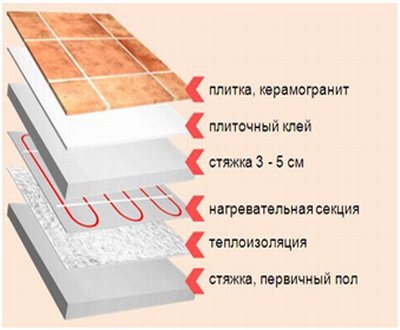

Heating cables are of two types: single-core, which have practically ceased to exist, and two-core, which have firmly taken their place. They are fundamentally different.
Single core cables create an electromagnetic field. And, although its values are within acceptable limits that are not harmful to health, the installation of systems with such a cable is not recommended in rooms where a person spends a lot of time.
A two-core cable for underfloor heating does not generate an electromagnetic field and can be installed in rooms for long-term stay of people: in bedrooms, offices, classrooms. The installation of a two-core cable can be stopped anywhere, based on the length of the section, but systems with single-core cables are mounted in such a way that the beginning and end of the heating cable must be at the same point.
A novelty on the heating system market is a self-regulating cable. In conventional systems, cables are heated evenly along their entire length, so when installing them, areas for furniture sets, bookshelves, wardrobes, beds and other stationary furniture must be free from cable routing. Furniture rearrangements in such rooms are often impossible. Even transferring the carpet from one part of the floor to another will become problematic, since if you lay it in the place where the heating cables pass, they will overheat and fail.
Recently, such inconveniences can be avoided due to the self-regulating cable, which is heated unevenly. The special technological design allows him to independently lower the temperature in any area.
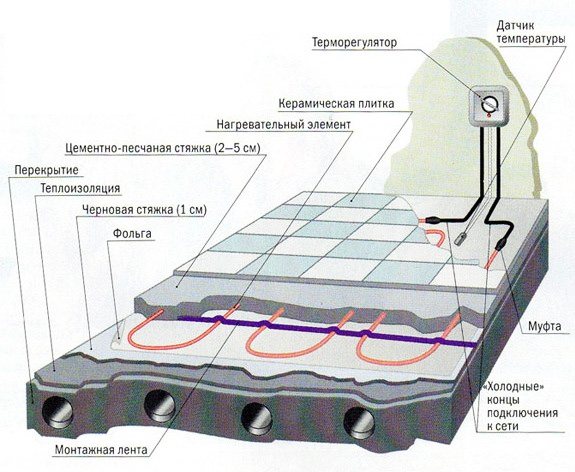

Different types of warm electric floors are manufactured in one configuration or another. The choice of this or that option is based on the need to change the floor level. Power, dimensions, reliability and technical characteristics depend on the manufacturer.
Heating infrared film
Suitable where rough finishing work has been completed. The film is laid directly under the laminate, tiles and even linoleum. It is produced in rolls, in which cutting lines are provided at certain distances, or in separate mats.
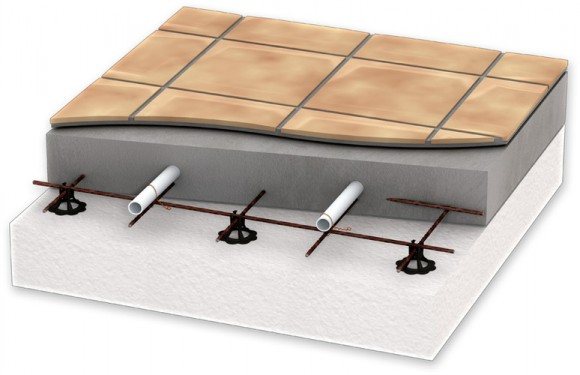

This floor will fit under the tiles in bathrooms. In these rooms, where the infrared floor is switched on for a short time, it is quite possible to do without a thermostat.
Attention! Some types of infrared floors cannot be mounted under tile adhesive or screed.
Advice! If in the room where it is planned to assemble the underfloor heating system, the finishing finish is completed, the correct solution would be to install an infrared film.
About strengths and weaknesses
The question of choosing a warm floor for tiles is far from unambiguous. Everyone decides it for himself. Therefore, mention should be made of the advantages and disadvantages of underfloor heating.
Advantages of a water-heated floor:
- relatively low cost of the coolant;
- low installation cost if connected to central heating.
Disadvantages:
- with a screed, it is easy to damage the pipelines, and it is almost impossible to notice;
- for efficient operation of the system, a circulation pump is used;
- installation in apartment buildings is prohibited in many regions; special permission is required for installation.
An electric underfloor heating is much simpler from the point of view of the possibility of its device, regardless of the type, purpose and occupancy of the room. But he is not perfect either.
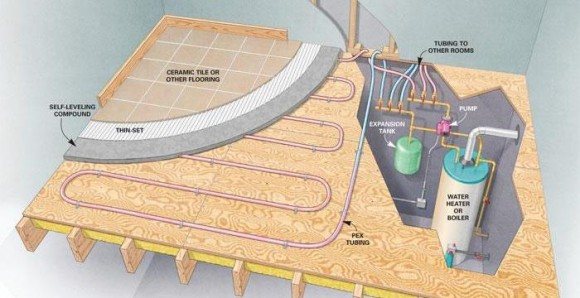

Benefits of electric underfloor heating:
- long service life (up to 50 years);
- low power consumption when working properly;
- tolerance of negative temperatures in the room, at rest.
Disadvantages:
- in rooms with a large area, two or more systems are assembled into one;
- single-core cables create a negligible electromagnetic field.
The advantage of each type of underfloor heating is the absence of convective drafts. This means the same temperature in any part of the room (vertically), no dust floating in the air. Well, in addition, a warm floor is a pleasant sensation, comfort and convenience.

